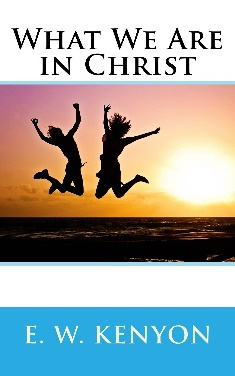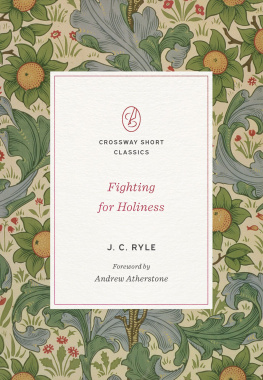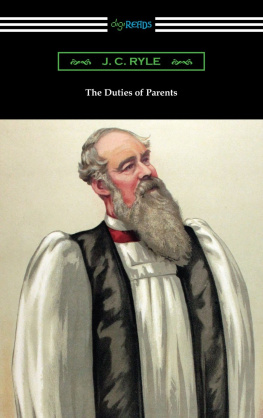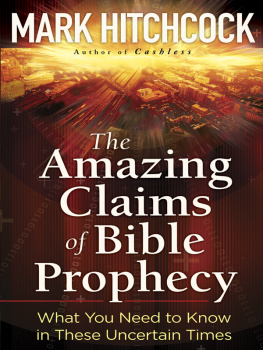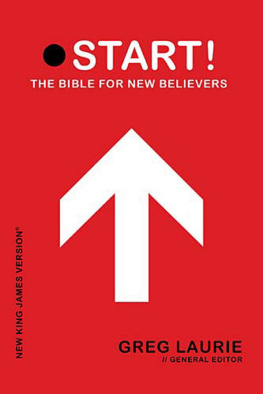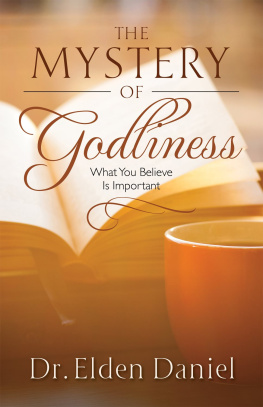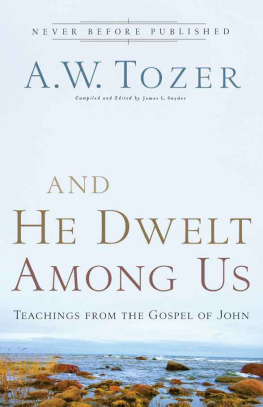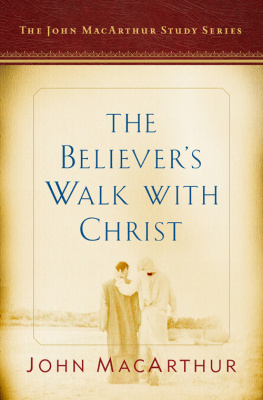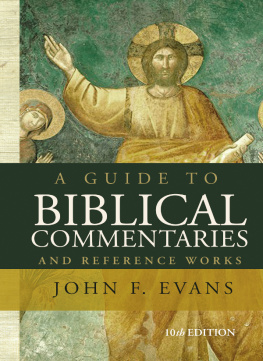Mark
Mark
Copyright 1993 by Watermark.
Published by Crossway
1300 Crescent Street
Wheaton, Illinois 60187
All rights reserved. No part of this publication may be reproduced, stored in a retrieval system, or transmitted in any form by any means, electronic, mechanical, photocopy, recording, or otherwise, without the prior permission of the publisher, except as provided by USA copyright law.
Art Direction: Mark Schramm
First printing 1993
Printed in the United States of America
Library of Congress Cataloging-in-Publication Data
Ryle, J. C. (John Charles), 1816-1900
Mark/ J. C. Ryle.
p. cm. (Expository thoughts on the Gospels) (Crossway classic commentaries : v. 2)
ISBN 13: 978-0-89107-727-5
ISBN 10: 0-89107-727-8
1. Bible. N.T. MarkCommentaries. I. Bible. N.T. Mark. English. Authorized. 1993. II. Title, m. Series. IV. Series: Ryle, J. C.
(John Charles), 1816-1900. Expository thoughts on the Gospels.
BS258S.3.R955 1993
226.3'07dc20 92-45785
| PG | 18 | 17 | 16 | 15 | 14 | 13 | 12 | 11 | 10 | 9 |
| 18 | 17 | 16 | 15 | 14 | 13 | 12 | 11 | 10 | 9 | 8 | 7 | 6 | 5 |
Contents
| ix |
| xi |
| xiii |
| 1 |
| 4 |
| 8 |
| 11 |
| 15 |
| 19 |
| 22 |
| 25 |
| 32 |
| 35 |
| 39 |
| 43 |
| 46 |
| 50 |
| 53 |
| 57 |
| 61 |
| 65 |
| 69 |
| 72 |
| 76 |
| 79 |
| 83 |
| 86 |
| 90 |
| 92 |
| 95 |
| 98 |
| 103 |
| 106 |
| 108 |
| 112 |
| 115 |
| 117 |
| 119 |
| 122 |
| 126 |
| 130 |
| 134 |
| 137 |
| 142 |
| 147 |
| 151 |
| 154 |
| 157 |
| 161 |
| 165 |
| 168 |
| 172 |
| 176 |
| 181 |
| 184 |
| 187 |
| 191 |
| 194 |
| 199 |
| 203 |
| 206 |
| 209 |
| 213 |
| 218 |
| 222 |
| 226 |
| 229 |
| 232 |
| 236 |
| 240 |
| 243 |
| 247 |
| 250 |
| 253 |
| 256 |
| 263 |
| 266 |
| 269 |
The purpose of the Crossway Classic Commentaries is to make some of the most valuable commentaries on the books of the Bible, by some of the greatest Bible teachers and theologians in the last five hundred years, available to a new generation. These books will help today's readers learn truth, wisdom, and devotion from such authors as J. C. Ryle, Martin Luther, John Calvin, J. B. Lightfoot, John Owen, Charles Spurgeon, Charles Hodge, and Matthew Henry.
We do not apologize for the age of some of the items chosen. In the realm of practical exposition promoting godliness, the old is often better than the new. Spiritual vision and authority, based on an accurate handling of the biblical text, are the qualities that have been primarily sought in deciding what to include.
So far as is possible, everything is tailored to the needs and enrichment of thoughtful readers lay Christians, students, and those in the ministry. The originals, some of which were written at a high technical level, have been abridged as needed, simplified stylistically, and unburdened of foreign words. However, the intention of this series is never to change any thoughts of the original authors, but to faithfully convey them in an understandable fashion.
The publishers are grateful to Dr. Alister A. McGrath of Wycliffe Hall, Oxford, Dr. J. I. Packer of Regent College, Vancouver, and Watermark of Norfolk, England, for the work of selecting and editing that now brings this project to fruition.
Crossway Classic Commentaries are selected with the purpose of making available some of the best quality help ever produced for the understanding of the Bible's practical message. All the books of Scripture were written to nurture faith and promote godly living, and expositions in this series are explicitly attuned to this aim, which on the whole was better understood by the church's older teachers than by its more recent ones. The first Crossway Commentary was J. C. Ryle's layman's exploration of Matthew's Gospel, and no apology is needed for the choice of his exposition of Mark as the second.
Ryle was a remarkable man. A banker's son, plunged into poverty by the failure of the family firm, he served for most of his life as a country clergyman who by his ability as preacher, writer, and statesman, and by the spiritual force of his ministry at all levels, became the leader of the evangelical wing of the Church of England in the second half of the nineteenth century and finally served for twenty years as first bishop and ministerial architect of the diocese of Liverpool, to which he was appointed in 1880, at the age of sixty-four. His roots were firmly fixed in the heritage of the Reformers, the Puritans, and the eighteenth-century evangelicals, from which he drew the vision and resources that shaped his own rugged, down-to-earth, no-nonsense ministry. The aim of his writings, as of his life, was the Apostle Paul's aim to present everyone before God's throne perfect and mature in Christ (Colossians 1:28) and his expositions are very obviously honed to this end.
If growth in faith and holiness is what you are after, therefore, Ryle is the man for you! The wisdom, clarity, force, and piercing quality of his commentaries are classic in every sense.
Pairing Ryle's expositions of Matthew (1856) and Mark (1857) is truly appropriate, for the two Gospels are noticeably parallel in their narrative either because Matthew wrote with the Gospel of Mark in front of him, or because Mark wrote with the Gospel of Matthew in front of him, or because both drew on the same stock of organized material. (Scholars have been debating the pros and cons of these three possibilities for more than a century, and are still at it, without any certainty forthcoming.) But Bible students do not need to know why the narrative framework of the two books is so similar; what is important is to grasp the distinct design of each, and to appreciate the portrait of Jesus and the presentation of his grace that each presents. So Ryle thought, and surely he was right.
To dismiss Mark as "a mere abridgment of St. Matthew," says Ryle, is "an entire mistake." Matthew highlights Jesus as King and teacher, "great David's greater son," and the new Moses, fulfilling and transcending the Old Testament order of things. Mark's focus is on activity the historical journey of Jesus, the God-appointed Savior of Isaiah 53, from his baptism through growing hostility to his cross and empty tomb, and the personal journey of disciples out of spiritual blindness and incomprehension into faith, repentance, self-denial, and cross-bearing, whereby they follow their Master. Ryle notes the difference, and his comments faithfully pursue it, so his two expositions, the one centering on Jesus' words and the other on Jesus' works, are quite different.

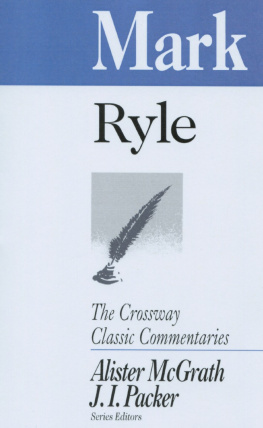
![J. C. Ryle - The Cross [Annotated, Updated]: Crucified with Christ, and Christ Alive in Me](/uploads/posts/book/150302/thumbs/j-c-ryle-the-cross-annotated-updated.jpg)
